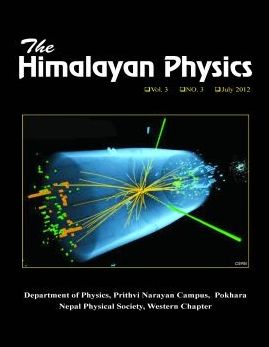An Ab initio Study on the Convergence of Electronic Properties of SiC Nanotubes
DOI:
https://doi.org/10.3126/hj.v3i0.7309Keywords:
Silicon carbide, Nanotube clusters, Hybrid density, unit cellsAbstract
Ab initio calculations of the electronic structures of silicon carbide (SiC) nanotubes represented by clusters are presented. The nanotube clusters of chiralities (3,3) and (5,5) are studied using the hybrid density functional B3LYP (Becke’s 3-parameter and the Lee-Yang-Parr exchange-correlation) and LANL2DZ (Los Alamos National Laboratory double ?) and 3-21G* basis sets. Evolution of electronic properties of silicon carbide (SiC) nanotubes (3, 3) and (5,5) with their length is discussed. The results suggest that the electronic properties of nanotubes change for short tubes of unit cells with lengths varying from 1 to 5. However, the properties do not seem to change significantly after this. Therefore, an infinite silicon carbide (SiC) nanotube can be approximated by a nanotube cluster of 5 unit cells.
The Himalayan Physics
Vol. 3, No. 3, July 2012
Page : 69-73
Downloads
Downloads
Published
How to Cite
Issue
Section
License
This license enables reusers to distribute, remix, adapt, and build upon the material in any medium or format for noncommercial purposes only, and only so long as attribution is given to the creator. If you remix, adapt, or build upon the material, you must license the modified material under identical terms.




